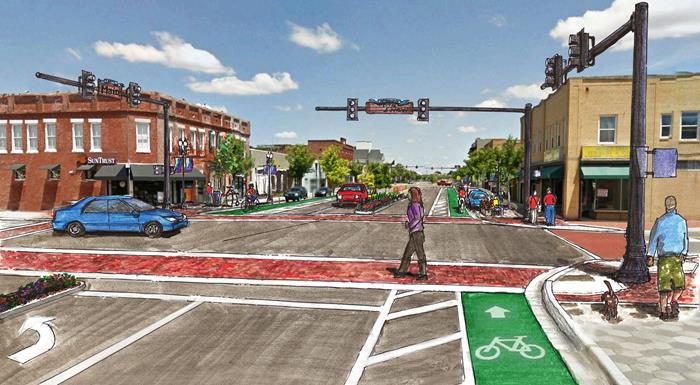Irvine, Calif. (March 21, 2017) - Michael Baker International, a global leader in engineering, planning and consulting services, today announced that work is underway for the next phase of a $4.4 million contract by Rancho Mission Viejo LLC (RMV) for a new roadway called Cow Camp Road. Work on this phase of the contract will ultimately connect Antonio Parkway to Ortega Highway and provide all backbone infrastructure to support existing and planned multi-use development in south Orange County, California. This could include up to 14,000 homes and 5.2 million square feet of non-residential uses on approximately 6,000 acres.
Cow Camp Road is located east of San Juan Capistrano in an unincorporated area of Orange County. This vital east-west, four-mile highway on the Orange County Master Plan of Arterial Highways is critical to the development of RMV’s overall Ranch Plan. It also serves as a major infrastructure link for both regional and local traffic.
“The Michael Baker team respects RMV’s rich history and its vision to thoughtfully connect people to the land by developing land uses and accompanying infrastructure,” said Mike Tylman, Michael Baker International Irvine Office Executive. “Our eight-year relationship with RMV and familiarity with their development goals give us the opportunity to demonstrate how We Make a Difference by addressing the key challenges of the project to minimize infrastructure impacts and maximize access to the land.”
In 2012, RMV selected Michael Baker to provide a full range of engineering services and permitting coordination in Phase 1 of the project, which spanned over 7,000 feet, including four signal-controlled intersections and a 1,400-foot-long bridge structure over Chiquita Canyon, with significant geotechnical challenges and seismic considerations. In advance of the next phase of the project, Michael Baker completed the Project Study Report (PSR) for Cow Camp Road Phase 2 in 2016. The report identified a preferred roadway alignment and included traffic studies, bridge general plans and a stormwater run-off management plan, as well as other planning-level documentation to accommodate all modes of transportation and increasing traffic demands.
Immediate planned improvements in Phases 2A and 2B of the project include the design and construction of a 1,400-foot-long bridge over the Gobernadora Canyon as well as utilities needed to support the development, including water, sewer, drainage and dry utility infrastructure improvements. Phases 2C and 2D, to follow the completion of Phases 2A and 2B, will include the design of the final portion of the roadway and a 700-foot-long bridge spanning San Juan Creek, and a connection to Ortega Highway (SR-74).
“Through our work on the previous phase, we know this project and its challenges very well, and will be able to hit the ground running,” said Mike Bruz, P.E., Michael Baker’s project manager. “Our multi-discipline team’s unique experience designing and executing the first phases of the project will continue as we build upon the sustainable and context-sensitive design solutions developed during the initial phases of the project.”
Construction is underway with completion of Phases 2A and 2B anticipated in 2020.
About Michael Baker International
Michael Baker International is a leading global provider of engineering and consulting services, which include planning, architectural, environmental, construction, program management, and full life-cycle support services as well as information technology and communications services and solutions. The company provides its comprehensive range of services and solutions in support of U.S. federal, state, and municipal governments, foreign allied governments, and a wide range of commercial clients. Michael Baker International has more than 6,000 employees in more than 90 locations across the U.S. and internationally. To learn more, visit www.mbakerintl.com
# # #

